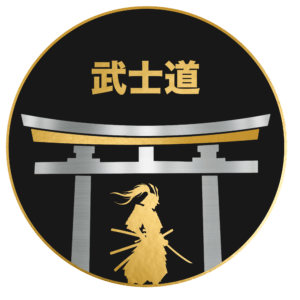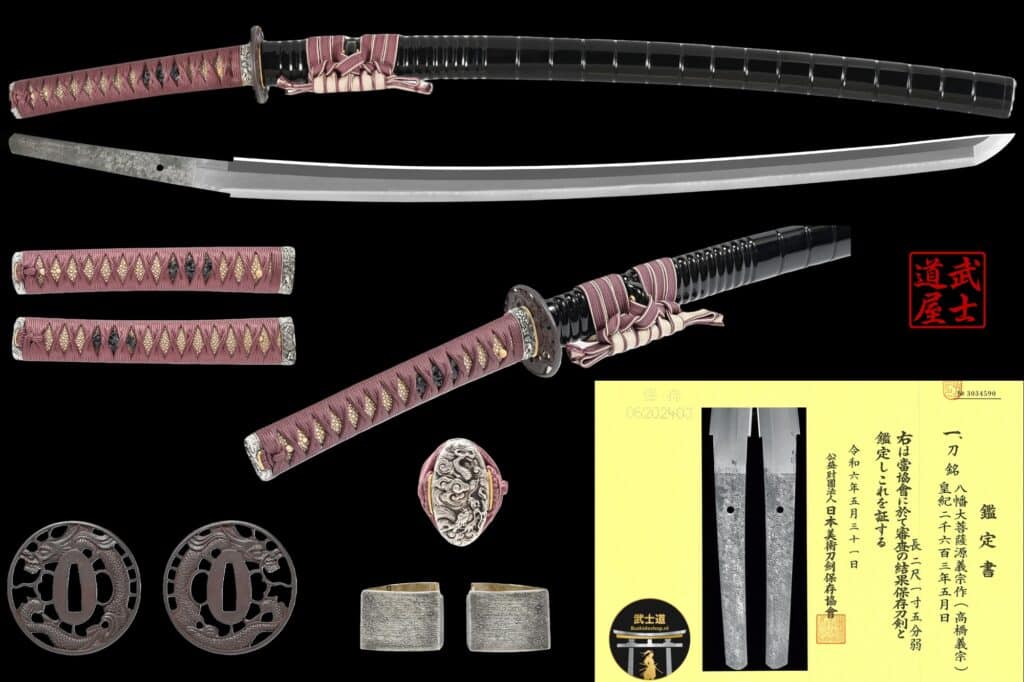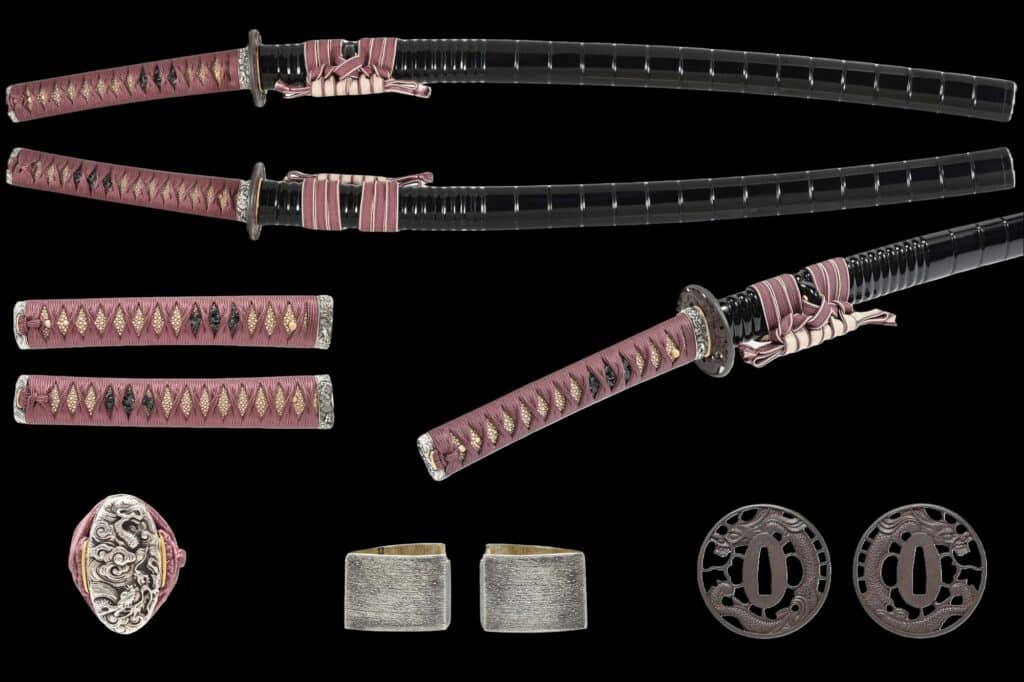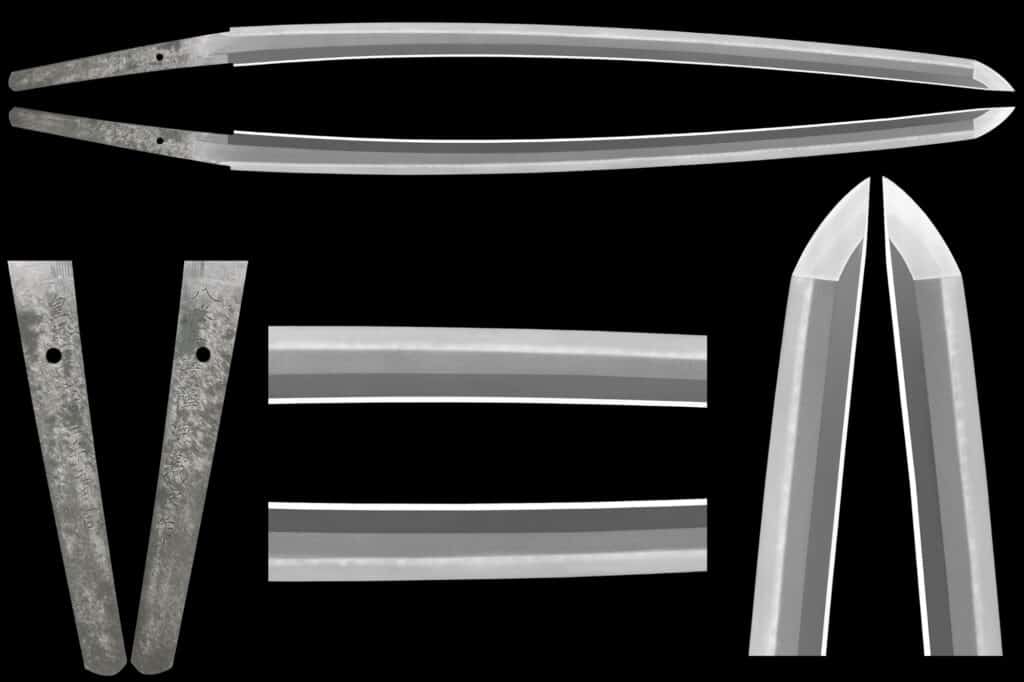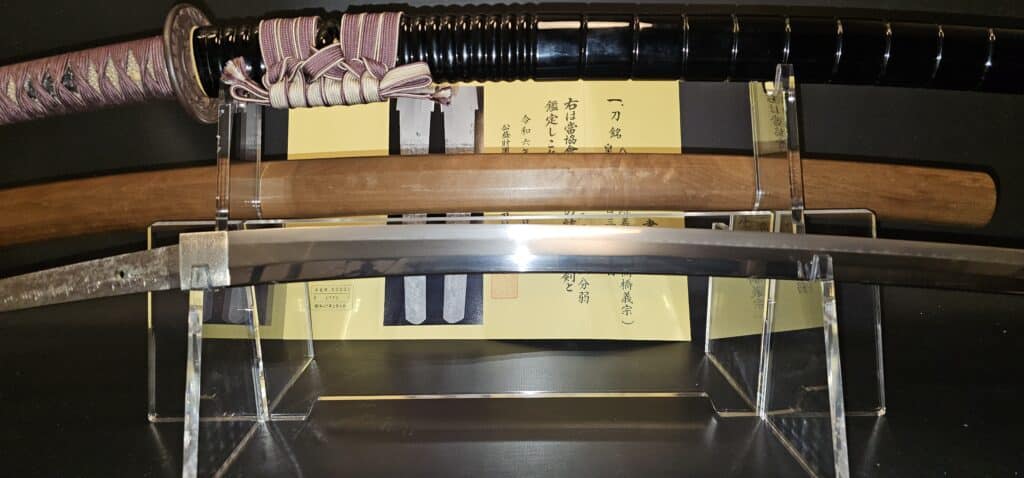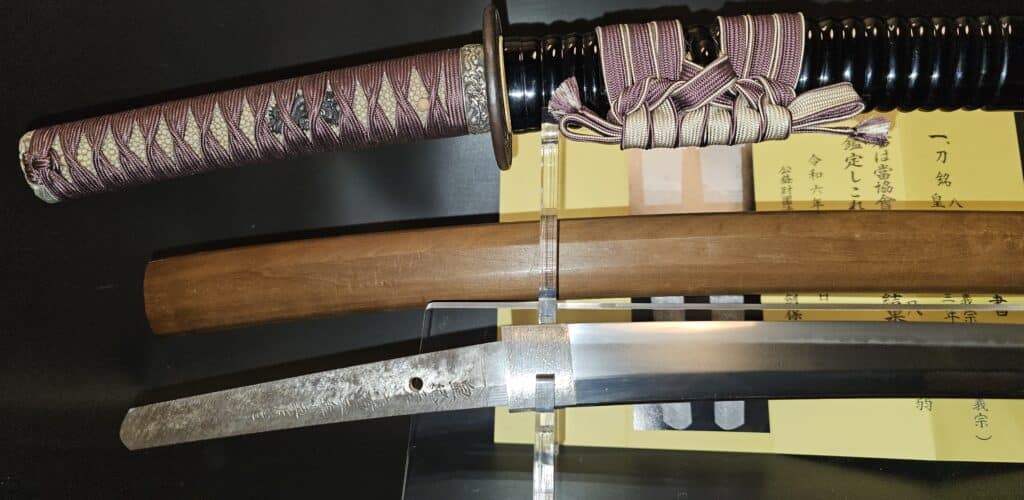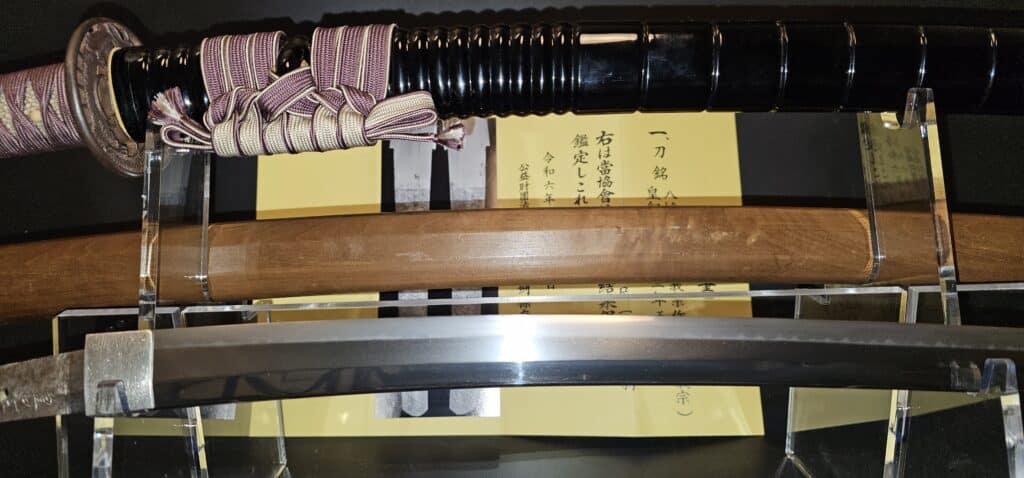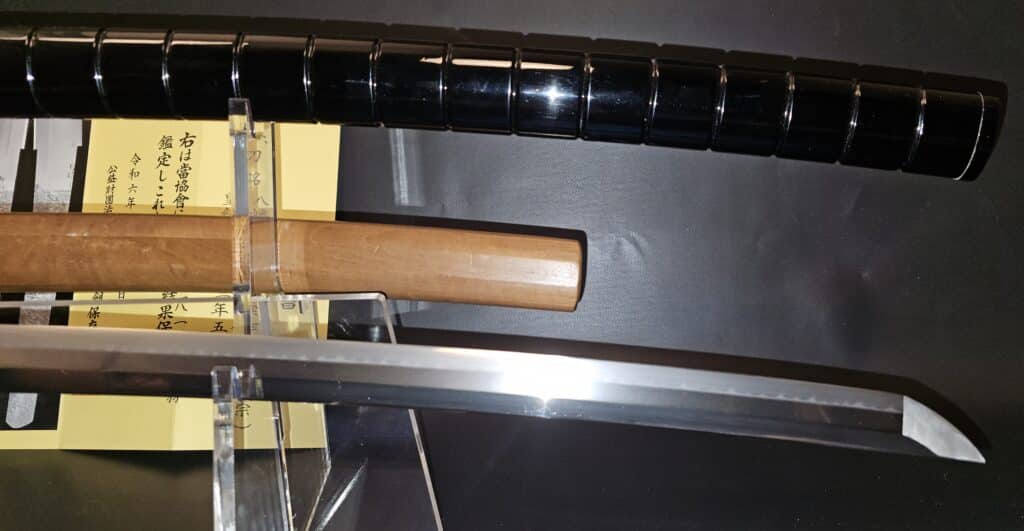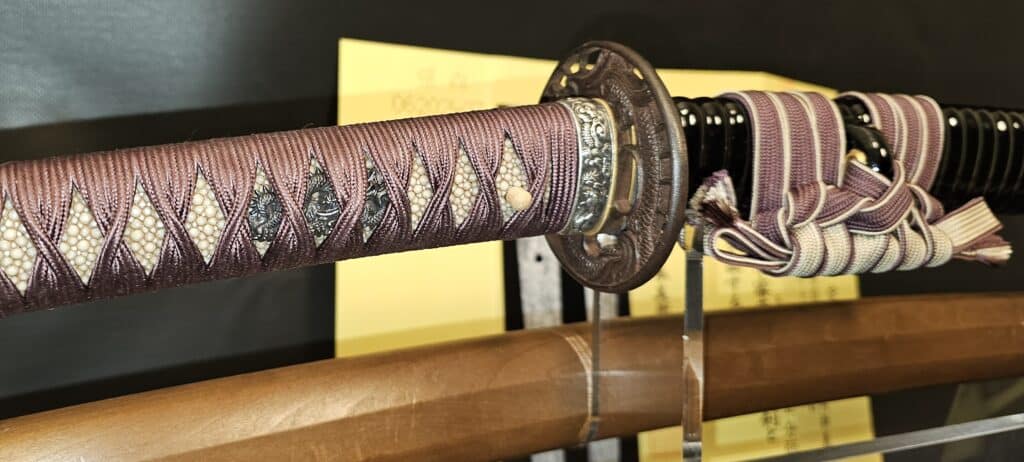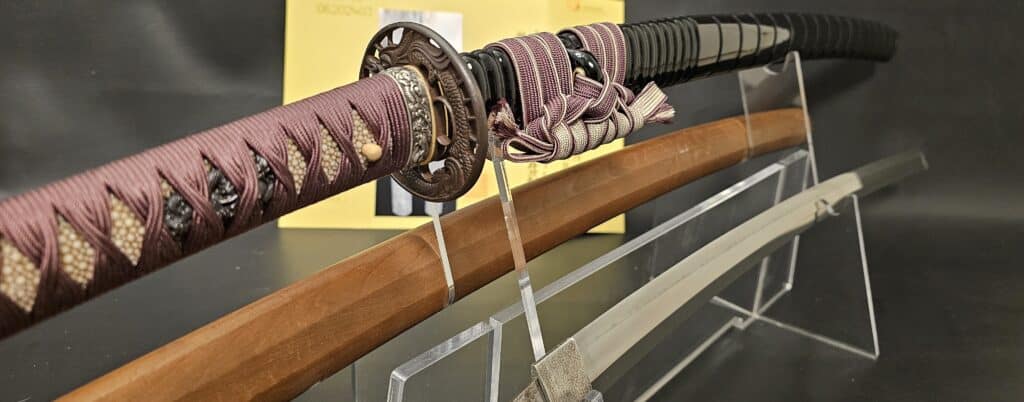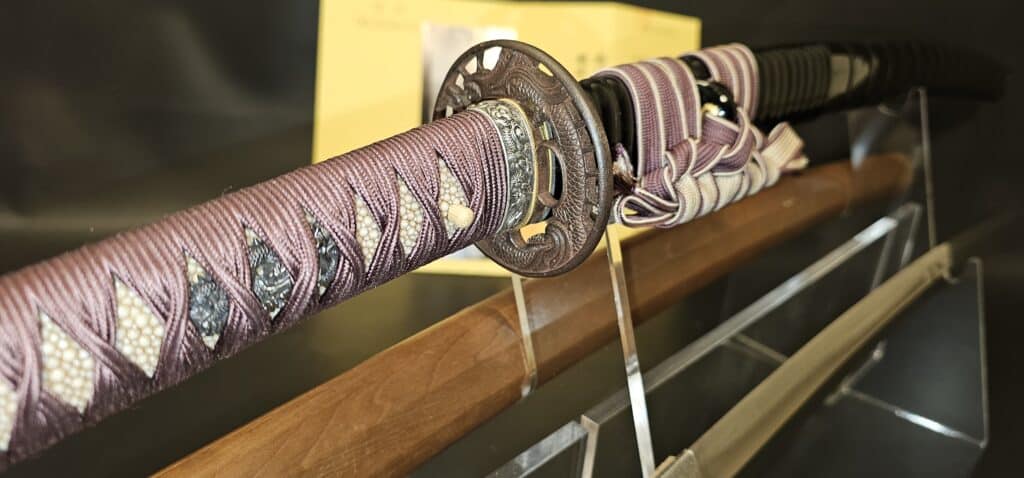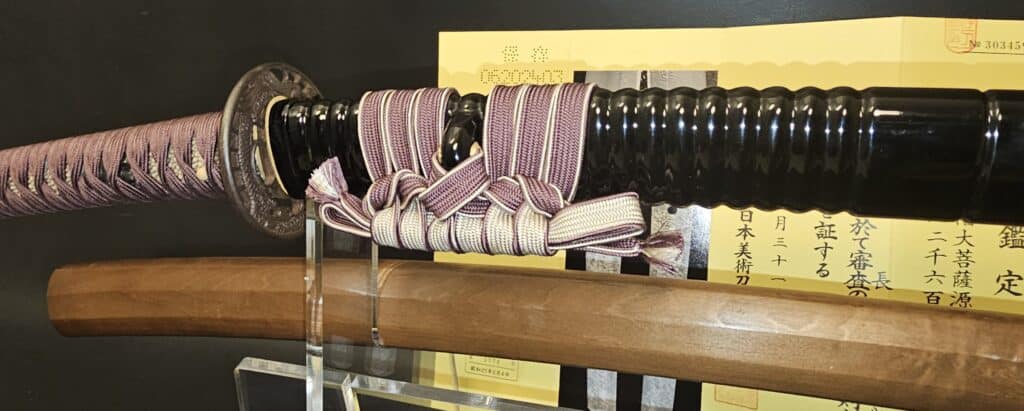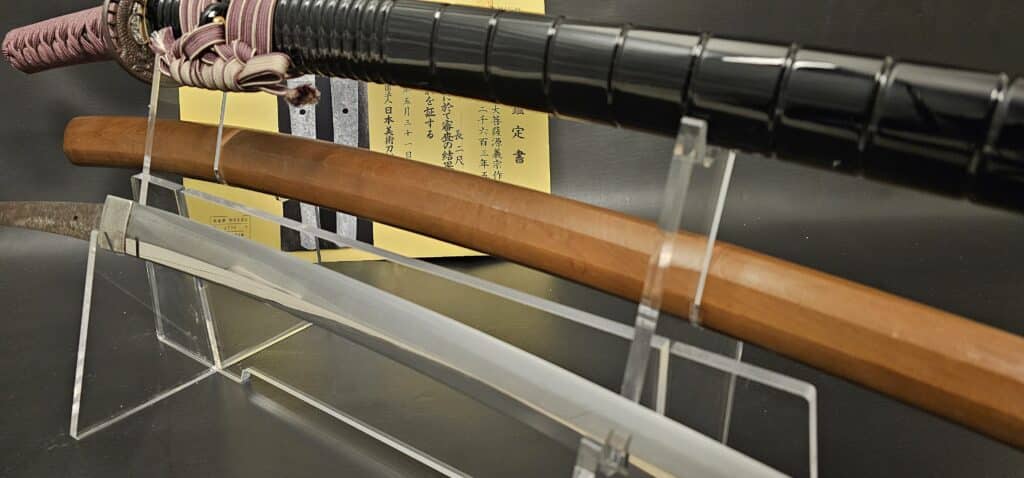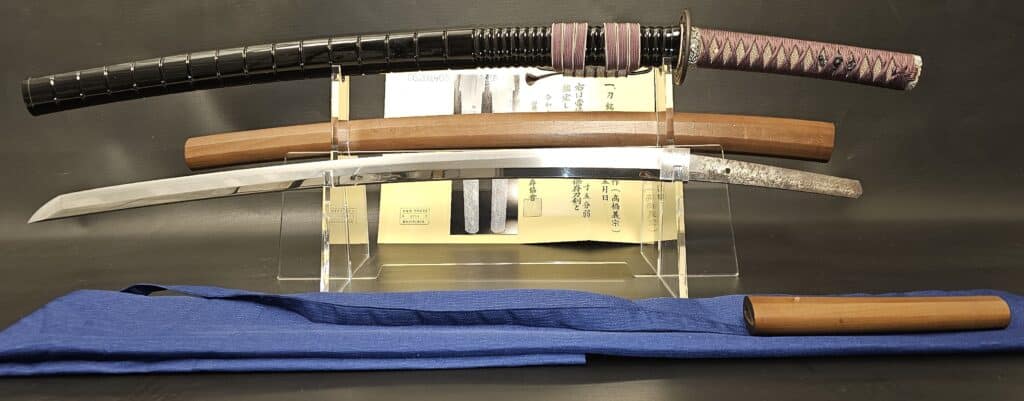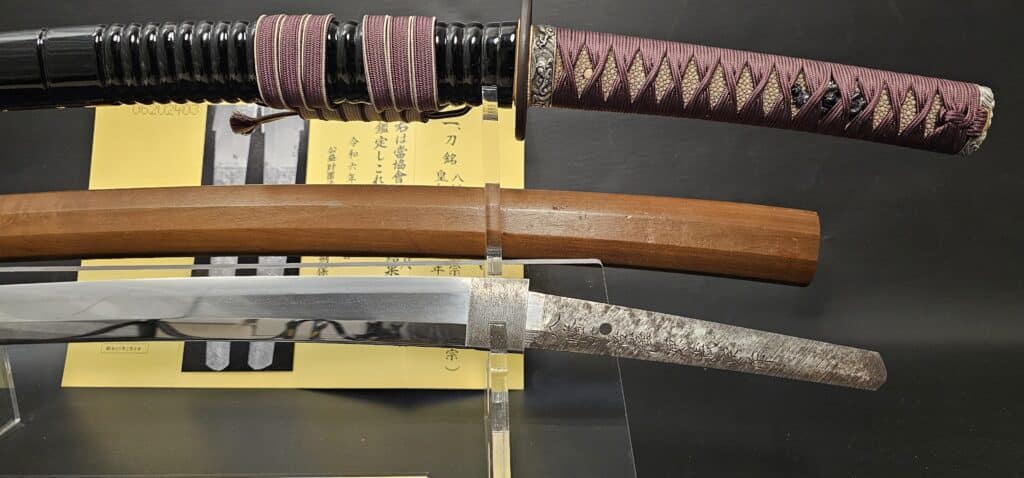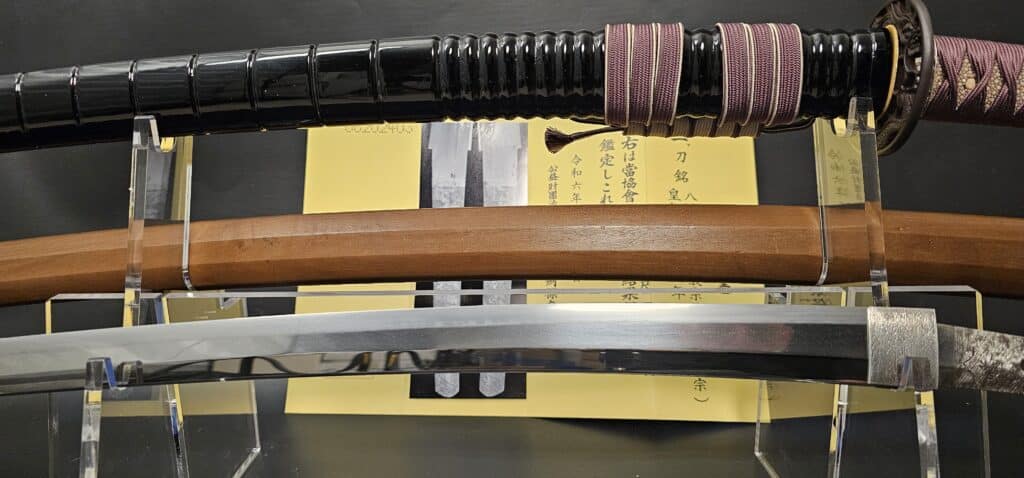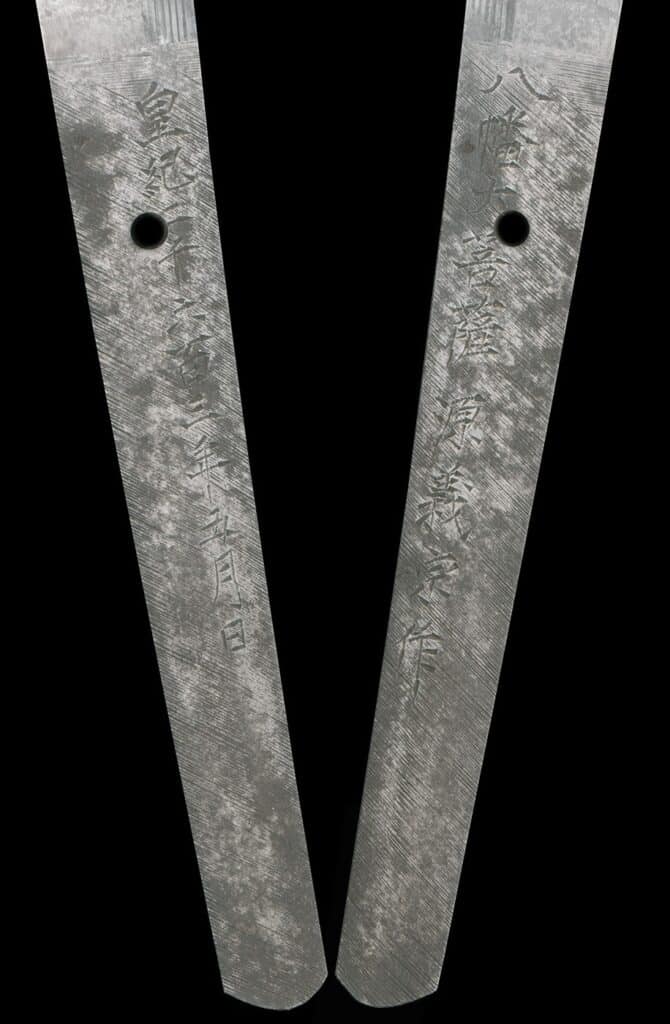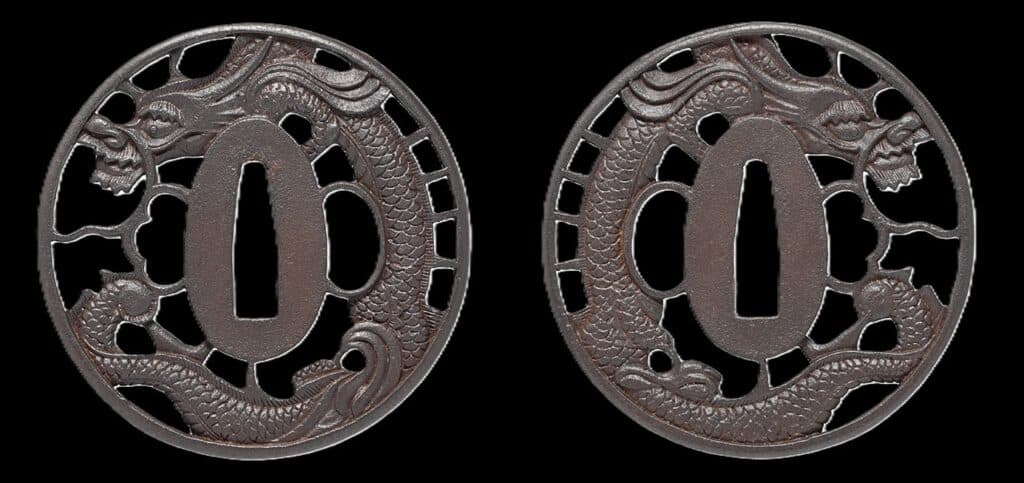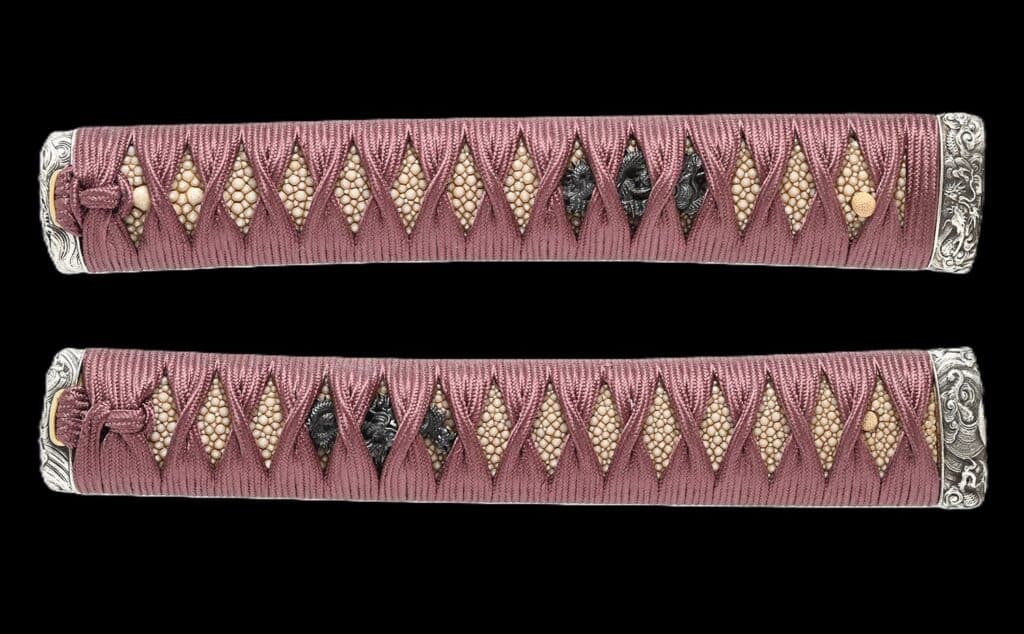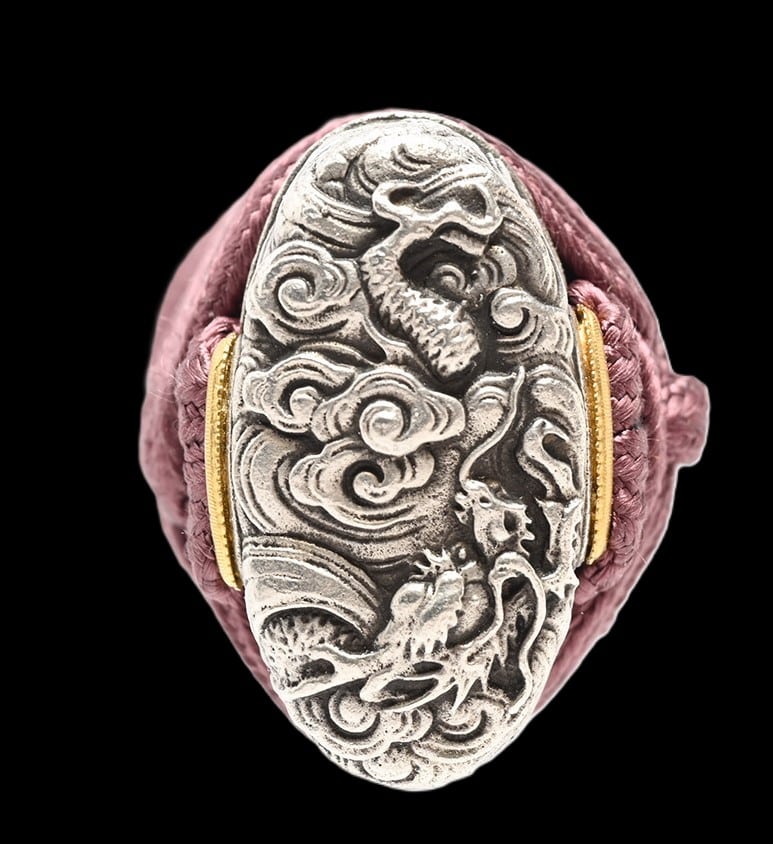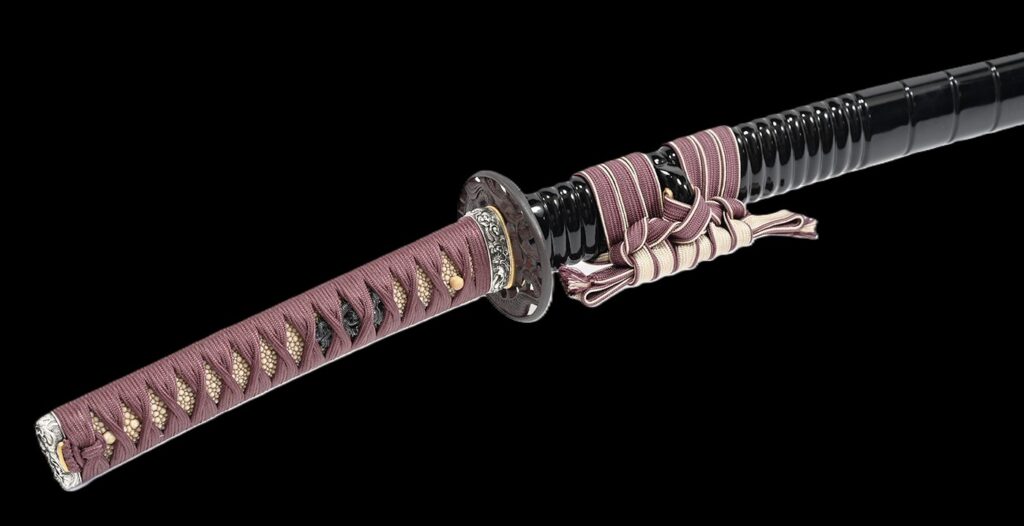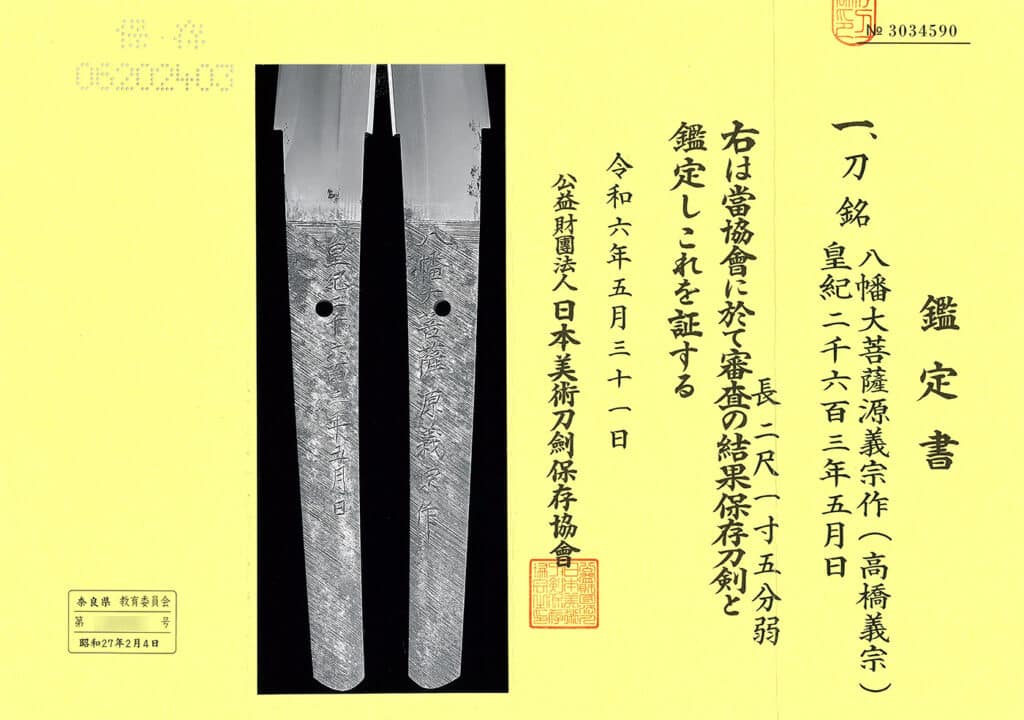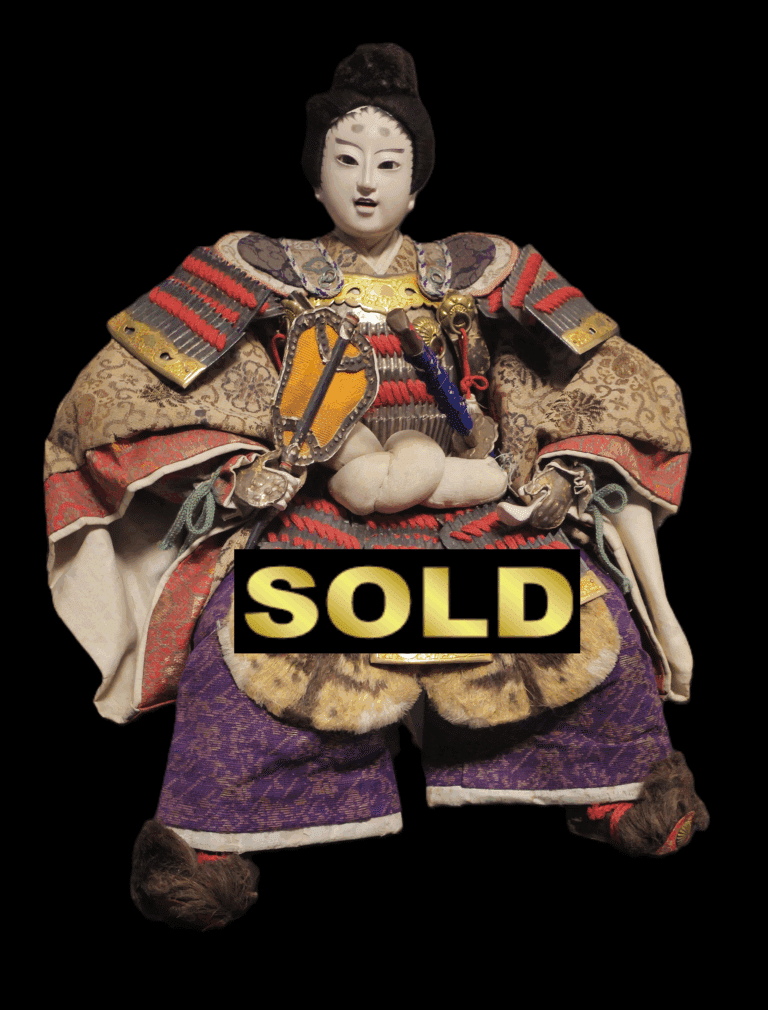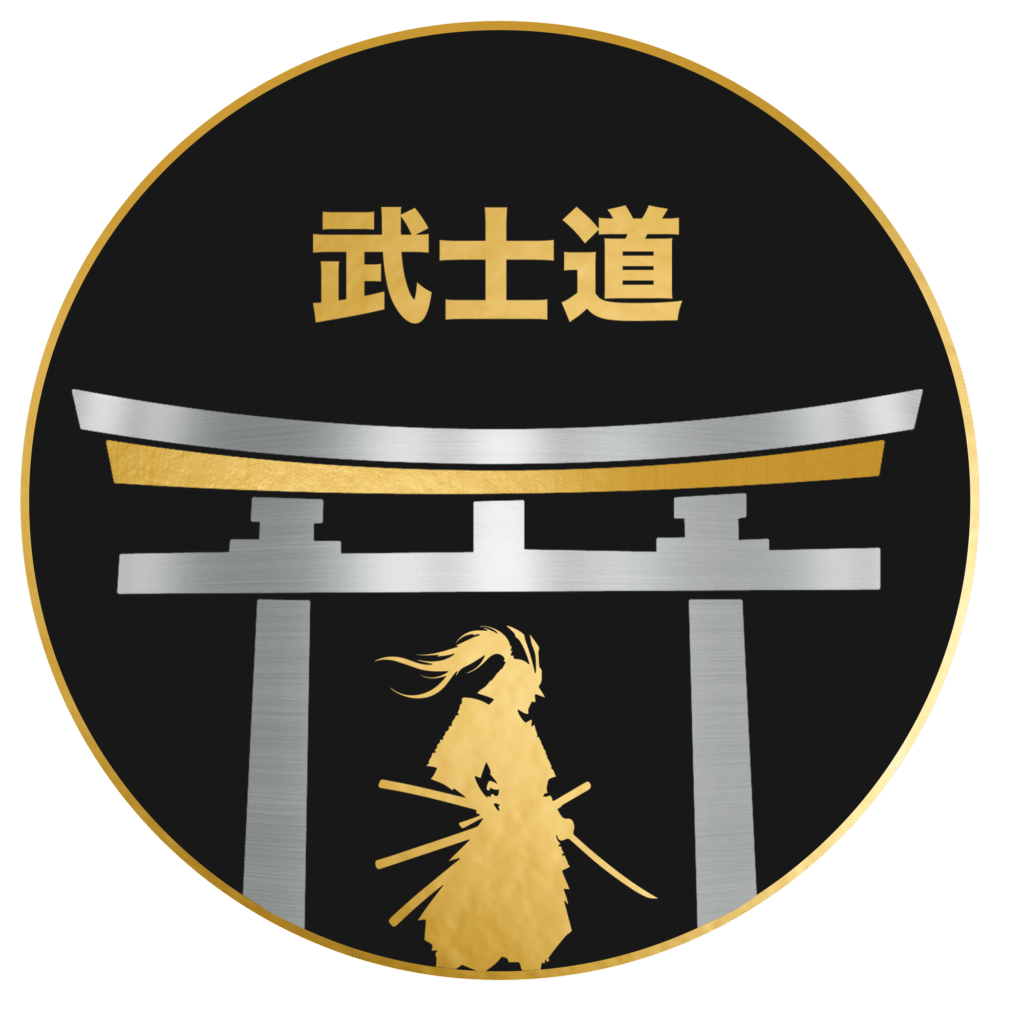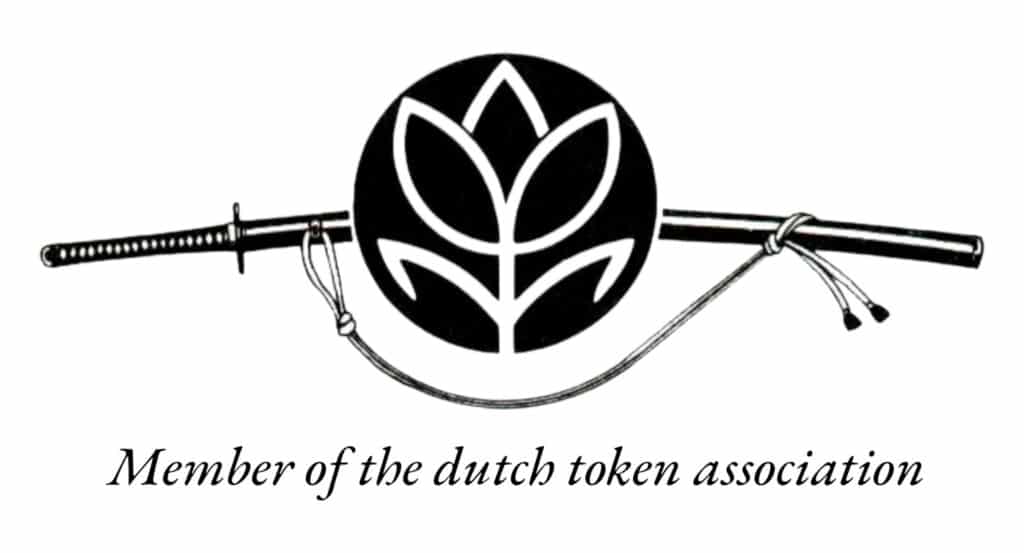Description
Katana by Takahashi Yoshimune (Minamoto Yoshimune)
SOLD
Signed: 八幡大菩薩源義宗作 (Hachiman Daibosatsu Minamoto Yoshimune Saku)
Name of the Blade: The God of War
Era: Showa 18 (1943)
Certification: NBTHK Hozon Token
Location: Forged in Ehime Prefecture, Japan
Blade Length (Nagasa): 65.1 cm
Curvature (Sori): 1.5 cm
Swordsmith Background:
-
Real Name: Takahashi Yoshimune
-
Born: 1897, Ehime Prefecture
-
Lineage: Older brother of Living National Treasure Takahashi Sadatsugu
-
Training:
-
Yokoyama Yujo
-
Hemmi Yoshitaka
-
Enju Kunitoshi
-
Yoshimune is one of only twelve smiths to receive the prestigious “Divine Works” (Shinmei Saku) rating in the 1942 Sacred Swordsmith Rank List. He is also widely regarded as a Saijō Saku (highest rank) smith in multiple modern references.
Blade Characteristics:
-
Nakago (Tang): Exceptionally well-finished, showcasing the smith’s dedication and pride.
-
Hamon: Precisely executed, representing expert tempering and control.
-
Hada: Very fine and dense mokume-hada, with visible chikei and ji-nie, a testament to master-level forging.
-
Overall Condition: Excellent; a true collector-grade gendai-tō.
-
Award History: Winner of the 1st Shinsaku Nihontō Den Grand Prix and known for producing swords for the Emperor and military generals.
Koshirae (Mountings):
-
The fittings are of equally high quality, featuring a dragon-themed tsuba and matching koshirae.
-
Decorative elements are intricate and refined, complementing the blade’s powerful symbolism and history.
Signature:
The inscription “八幡大菩薩 源義宗作” pays homage to Hachiman Daibosatsu, the divine protector of warriors, and further enhances the sword’s symbolic stature as a “God of War” blade.
Remarks:
This is not merely a gendai katana — it is a historically and artistically significant work by one of the highest-ranked smiths of the modern period. It embodies the martial spirit of Japan during the Showa era and is an exceptional opportunity for discerning collectors, connoisseurs of nihontō, or those seeking a masterpiece with imperial and military heritage.
